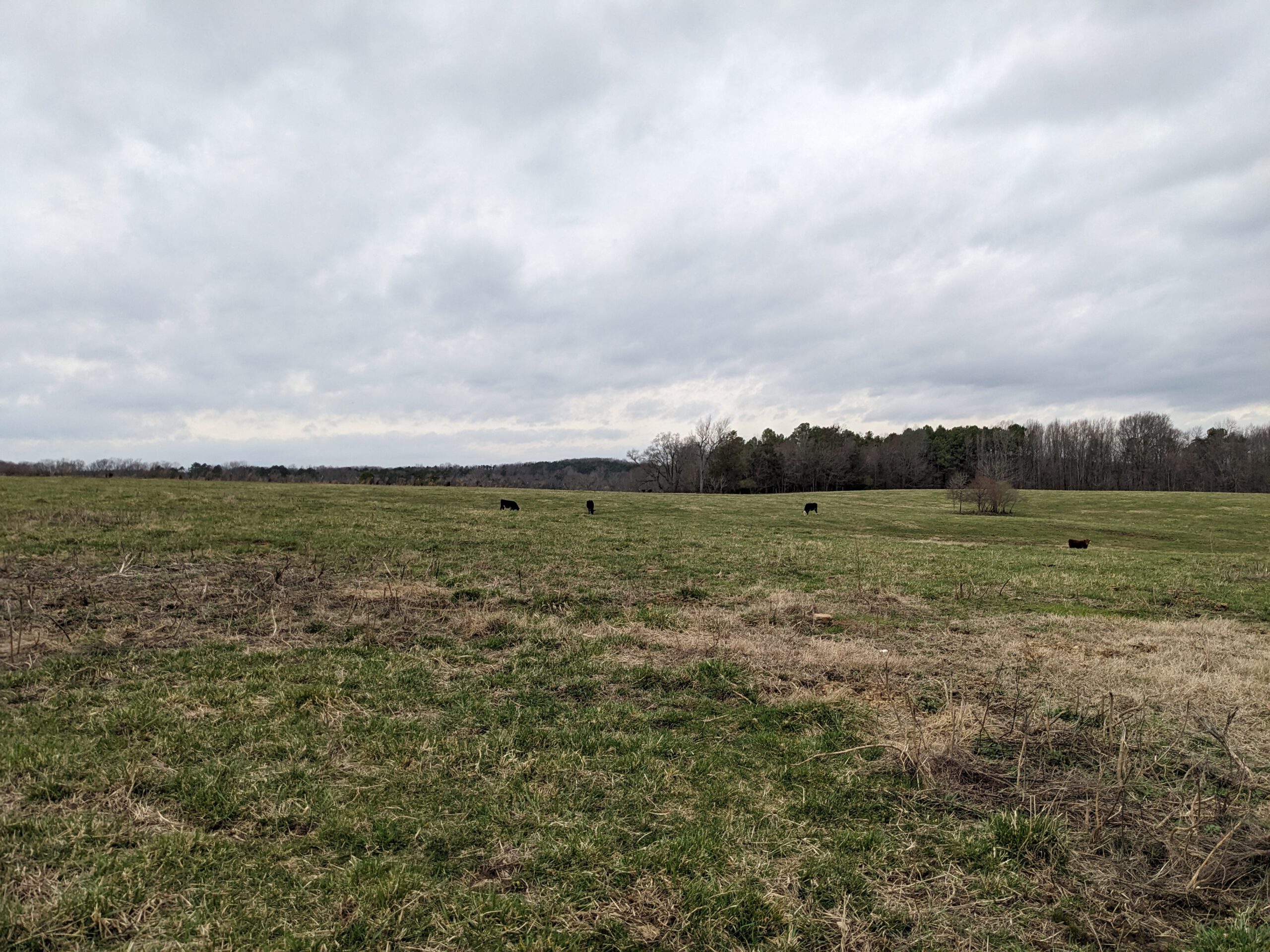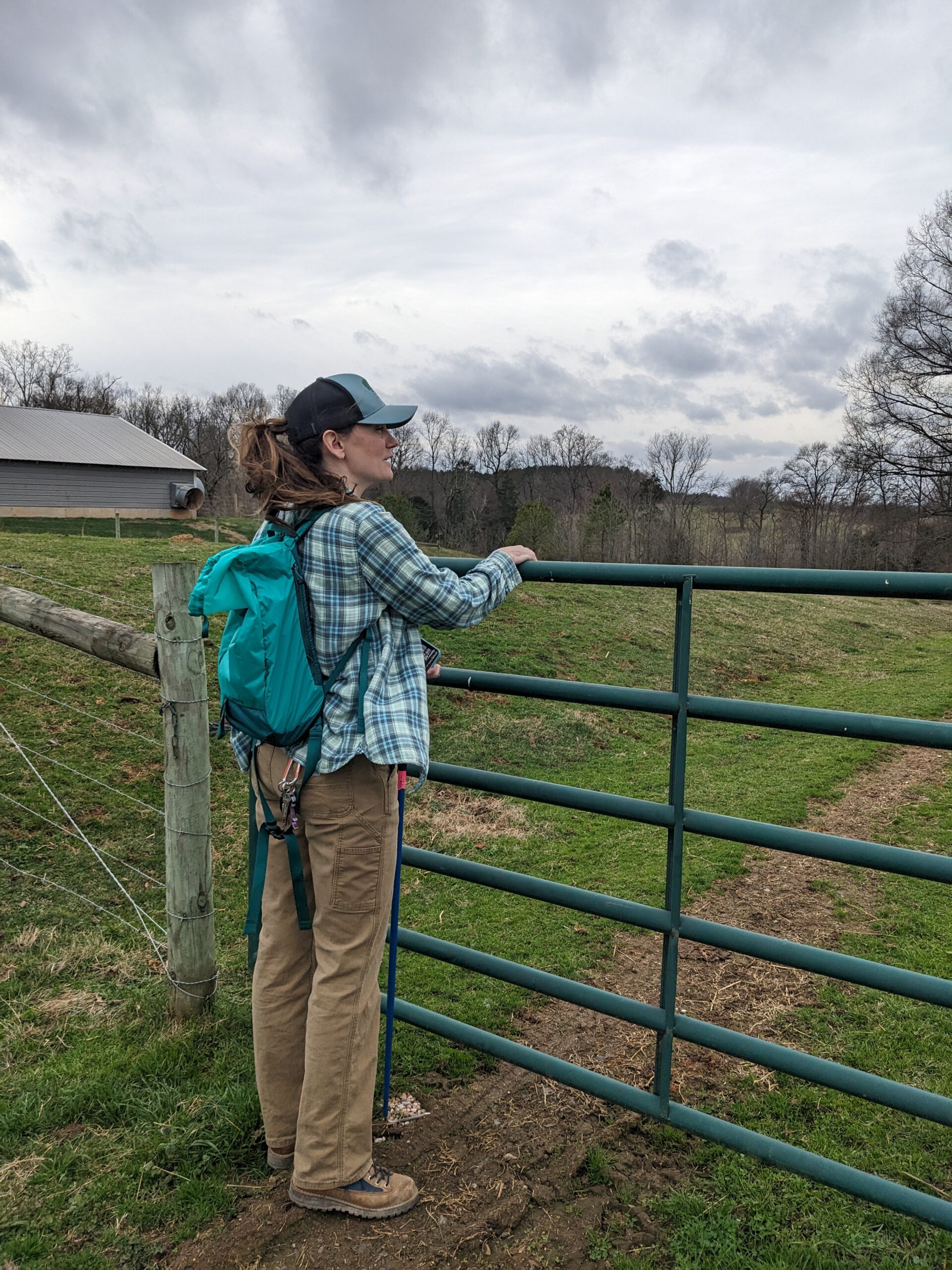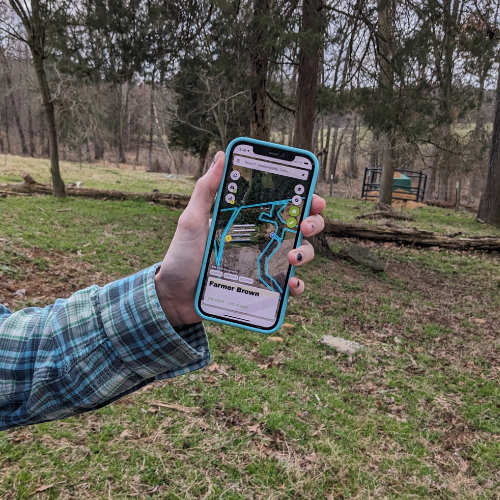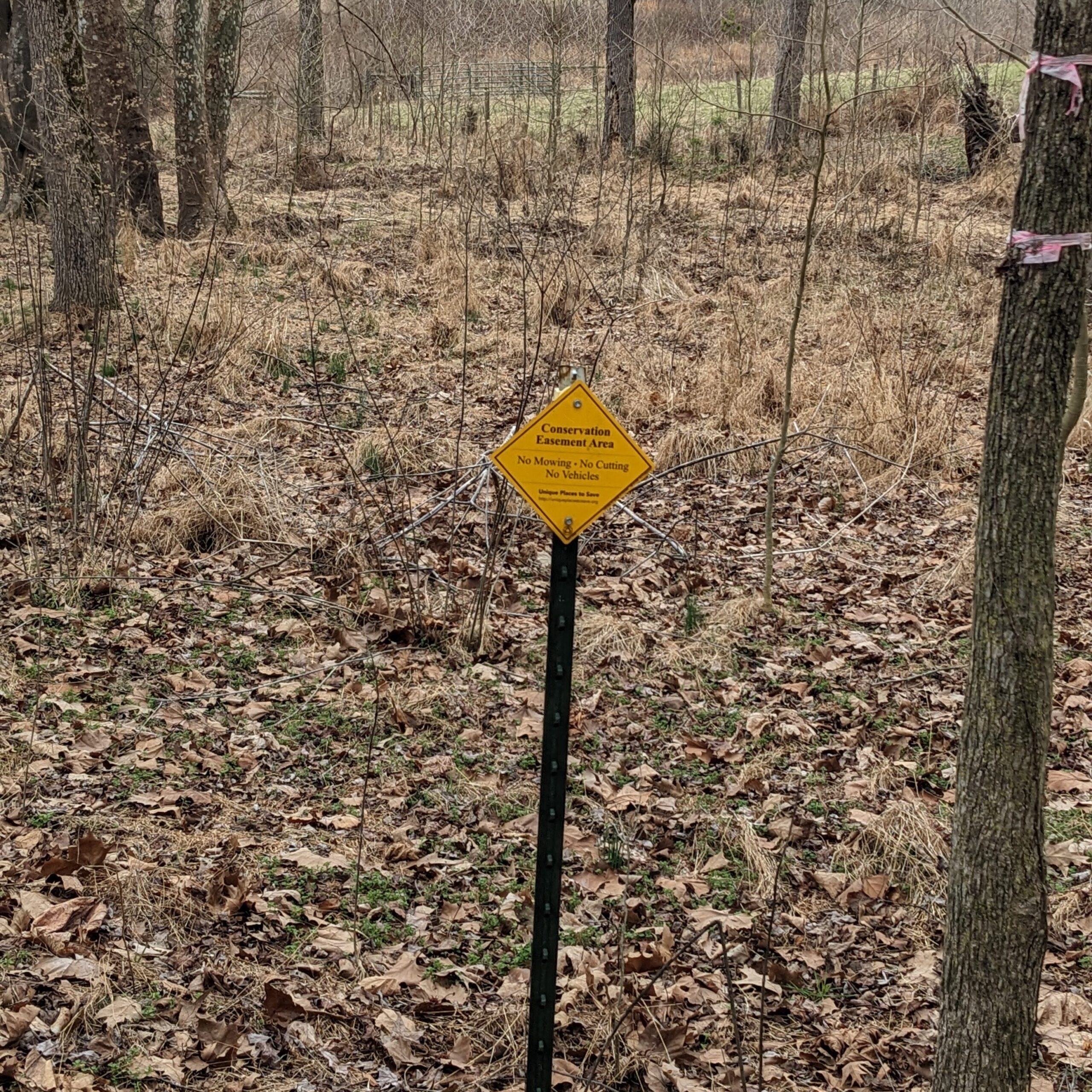On Wednesday, March 25, we hosted our very first Conservation Conversations! Eliza Lawdley, TLC's farm…

By Cara Lewis, Senior Communications Manager
Triangle Land Conservancy offers a variety of conservation options for landowners who want to preserve and protect their land. This includes establishing conservation easements, a voluntary but legally binding agreement which allows the owner to remain in control of their property and use the land, sell it, or pass it on to heirs while forever protecting the land by limiting development.
Earlier this year, James and Matthew Bailey protected their 125-acre farm in Wendell, North Carolina forever by placing the property under a conservation easement with TLC. As a result, the Baileys agreed to voluntarily place the land into the Farmland Preservation Program from Wake County Soil and Water Conservation District. So, instead of the land being developed and populated with new houses, the property will continue to grow vegetables like squash and sweet potatoes by farmers who lease the 55 acres of available cropland.
Each easement agreement is different, based on the needs of the owner(s) and the unique characteristics of the property. In the Bailey’s case, they will continue to own the land, but the conservation easement will restrict the ability to develop the land to protect its conservation and agricultural value.
What's involved in monitoring conservation easements?
Inspections for monitoring easements can take countless forms ranging from aerial observation and remote imagery to onsite inspections. The location and size of the property often determines what types of monitoring are necessary. TLC mainly does onsite inspections.
Onsite monitoring provides a thorough way to check on most conservation easements and can often include meeting with the landowner to stay informed and aware of issues or plans that may not be visible from an inspection.
Many land trusts including TLC have a land steward that conducts onsite monitoring by visiting easement properties at least once a year to observe and evaluate the condition of the land, compliance with legal agreements and permitted practices, and identifying notable changes and potential issues or concerns. Examples of easement violations include: signs of trespassing, lost habitat, polluted streams, unauthorized vegetation removal, and unapproved structures or roadways.
A day in the life of a TLC steward

Hannah Royal is the Stewardship Manager at TLC and she is responsible for the management and monitoring of 175 easements. This is accomplished through the support of a team of volunteers who monitor some of the TLC conservation easements.
I recently got to accompany Hannah one morning to inspect a farm in Chatham county. Our day began at 8:30 am when we met to carpool through the scenic Silk Hope region of North Carolina.
A rural community established in the 1800s, farming is still the central livelihood for many residents of Silk Hope. Over the years, farmers have produced cotton, tobacco, grains, pecans and more. They’ve also managed Angus cattle and chickens. During our walking tour of the property, we were greeted by the landowner’s dog and saw mostly cows.
Landowners are notified when their sites will be visited and ideally have secured pets and ensured entry points are accessible. If not, land stewards such as Hannah, may have to reschedule a visit. Fortunately, we were able to enter this Silk Hope property away from a protective dog and walk the entire perimeter during the inspection.
While being outdoors is often considered a positive for those who work in conservation, there are many other aspects to land management and stewardship.
Data collection, record keeping, and reporting
Once onsite, Hannah uses a software program called LANDSCAPE to access a detailed map of the property noting the number of acres, property type, descriptions that include notable features, and team members. The program lets Hannah track her route, take photos, and collect various data including species observations.
Completing an onsite monitoring job can take several hours or an entire day depending on the drive time to and from the property, the number of acres to inspect, along with taking photos and entering observations and findings. While software programs have made the process more efficient, there is still a considerable amount of processing, paperwork, and reporting required after each site visit.
Depending on the legal agreements and number of organizations involved in a conservation project, site visit reports are submitted accordingly. Many landowners who have conservation easements with TLC also have agreements with state organizations such as the NC Department of Agriculture & Consumer Services or the North Carolina Land and Water Fund.
How do you know there is an easement on a property?
Sometimes you don’t, however most of us are surrounded by easements every day. Examples in suburban areas include utility easements, road easements, sidewalk easements, and drainage easements. Many neighborhoods are planned with easements in mind that may include playgrounds, pet exercise areas, and landscaping.
These are considered “affirmative” easements because they empower access required to specific areas and allow specific activities, such as recreation. A common example is a power easement that allows an electricity company to install and maintain electrical power lines, above or below ground, on private property. These easements may or may not have related signage as residents in cities and suburban neighborhoods are used to seeing local crews walking around or through yards or shared spaces to conduct road maintenance, remove fallen trees from public greenways, etc.
Conservation easements that include large parcels of land, including many of the nature preserves protected by TLC, are considered “negative easements” because they honor the landowners desire to restrict the use of the land. Therefore, these easements almost always are identified by boundary postings.
Boundary postings are signs posted along the perimeter of an easement to indicate land that is not accessible to the public. Many farm easements have irregularly shaped boundaries, such as buffer strips around wetlands or streams, so these posted signs are necessary to ensure compliance with the terms of the conservation easement and prevent trespassing and unauthorized activities.
Although technically classified as negative easements, rural and farm easements often allow continued hunting, farming and forestry, and even future homesites. And conserving and protecting land and water is almost always a positive!
Easements: Did you know?
Conserving land is a big decision and often involves working with numerous public and private entities. Some key points for landowners to consider include:
- Ownership retained: You retain your private property rights and can sell, lease, or pass your land on to your family.
- Flexible: Farming, forestry, hunting, recreational uses, and a limited number of house sites and/or property divisions may be permitted.
- Financial benefits: You may be able to significantly reduce your federal income tax liability for several years, starting the year you conserve your land. Compensation through local, state and federal grant funding may also be available.
- Tailored to you: All conservation easements are unique to the land being conserved and to your vision for your property.
- Voluntary: All landowners who decide to conserve their land with a conservation easement do so voluntarily.
- Estate planning benefits: Conserving your land can help you with estate planning, reduce your estate taxes, and allows for transition to the next generation.
For more information on easements or conserving your land, please see Land Conservation Options and contact one of TLC’s land protection staff members to learn more and understand your options.



